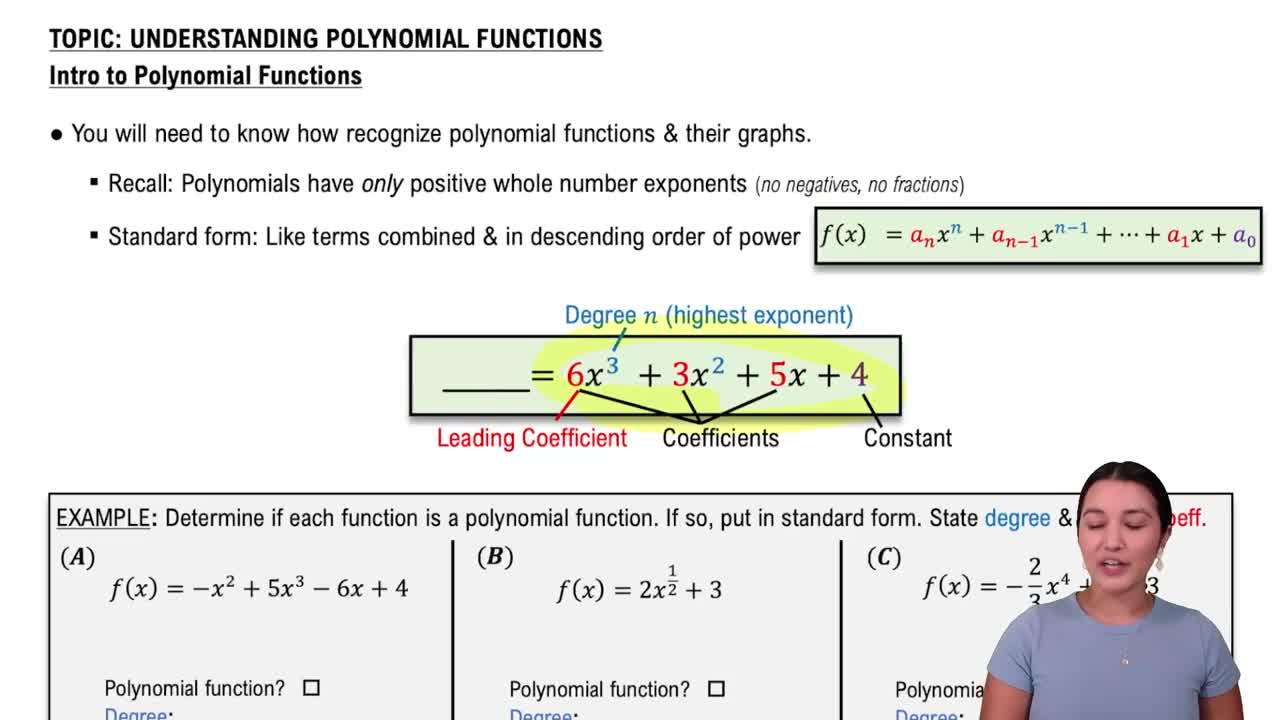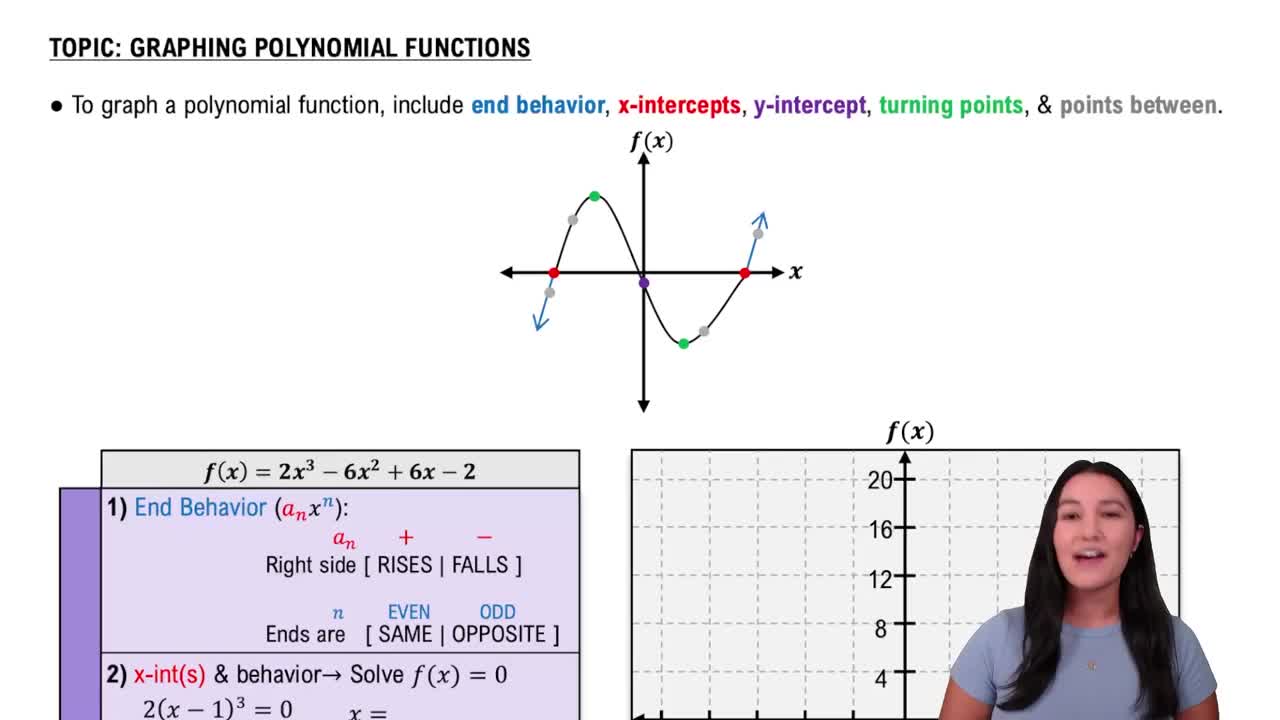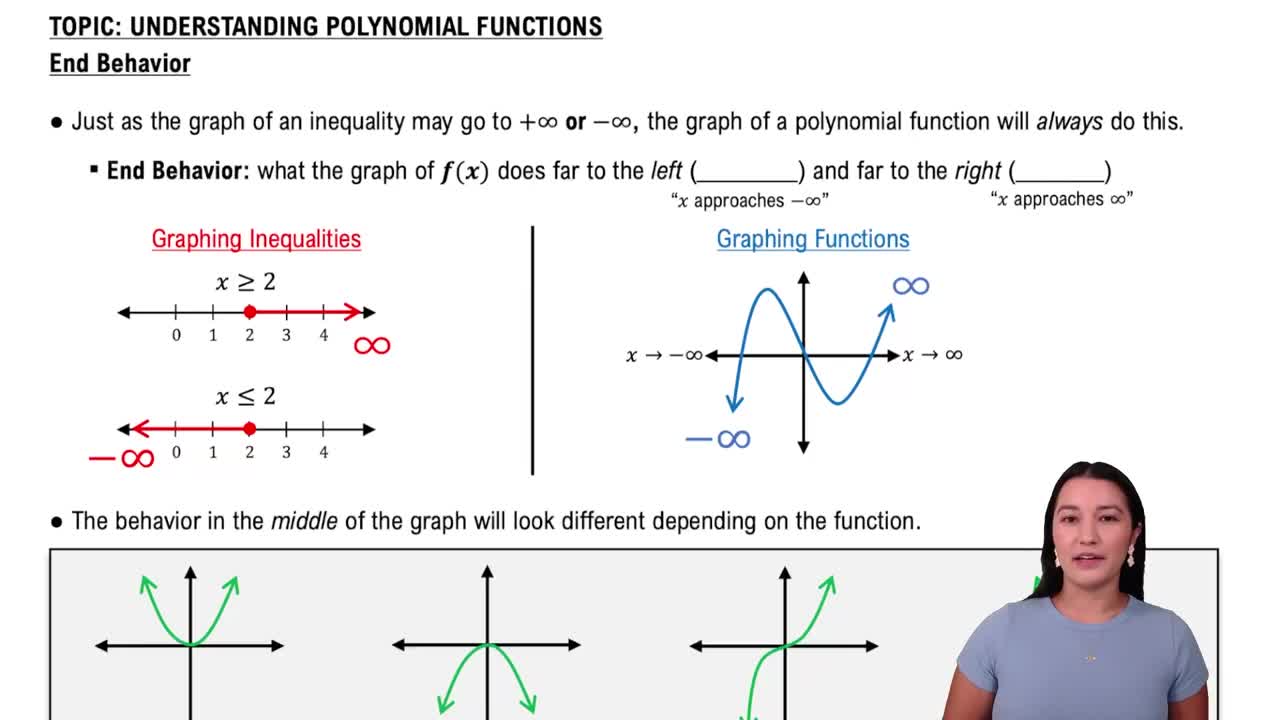Table of contents
- 0. Review of Algebra4h 16m
- 1. Equations & Inequalities3h 18m
- 2. Graphs of Equations43m
- 3. Functions2h 17m
- 4. Polynomial Functions1h 44m
- 5. Rational Functions1h 23m
- 6. Exponential & Logarithmic Functions2h 28m
- 7. Systems of Equations & Matrices4h 6m
- 8. Conic Sections2h 23m
- 9. Sequences, Series, & Induction1h 19m
- 10. Combinatorics & Probability1h 45m
4. Polynomial Functions
Understanding Polynomial Functions
Problem 32
Textbook Question
Graph each polynomial function. Factor first if the polynomial is not in factored form. See Examples 3 and 4. ƒ(x)=-x(x+1)(x-1)
 Verified step by step guidance
Verified step by step guidance1
Identify the polynomial function: \( f(x) = -x(x+1)(x-1) \).
Recognize that the polynomial is already in factored form: \( -x(x+1)(x-1) \).
Determine the roots of the polynomial by setting each factor equal to zero: \( x = 0, x = -1, x = 1 \).
Identify the degree of the polynomial by counting the number of factors: The degree is 3, which is odd, indicating the end behavior of the graph.
Sketch the graph using the roots and end behavior: The graph will cross the x-axis at \( x = 0, x = -1, \) and \( x = 1 \), and since the leading coefficient is negative, the graph will start in the positive direction and end in the negative direction.
Recommended similar problem, with video answer:
 Verified Solution
Verified SolutionThis video solution was recommended by our tutors as helpful for the problem above
Video duration:
6mPlay a video:
Was this helpful?
Key Concepts
Here are the essential concepts you must grasp in order to answer the question correctly.
Polynomial Functions
A polynomial function is a mathematical expression involving a sum of powers in one or more variables multiplied by coefficients. The general form of a polynomial in one variable is f(x) = a_n*x^n + a_(n-1)*x^(n-1) + ... + a_1*x + a_0, where 'n' is a non-negative integer and 'a_n' are constants. Understanding the structure of polynomial functions is essential for graphing them accurately.
Recommended video:

Introduction to Polynomial Functions
Factoring Polynomials
Factoring a polynomial involves expressing it as a product of its simpler polynomial factors. This process is crucial for identifying the roots or x-intercepts of the polynomial, which are the values of x that make the polynomial equal to zero. For example, the polynomial f(x) = -x(x+1)(x-1) is already factored, making it easier to graph by identifying its roots at x = 0, x = -1, and x = 1.
Recommended video:
Guided course

Introduction to Factoring Polynomials
Graphing Polynomial Functions
Graphing polynomial functions requires plotting points based on the function's values and understanding its behavior at various intervals. Key features to consider include the x-intercepts (roots), y-intercept, and the end behavior of the graph, which is influenced by the leading term of the polynomial. For the function f(x) = -x(x+1)(x-1), the graph will cross the x-axis at its roots and will open downwards due to the negative leading coefficient.
Recommended video:

Graphing Polynomial Functions

 6:04m
6:04mWatch next
Master Introduction to Polynomial Functions with a bite sized video explanation from Callie
Start learningRelated Videos
Related Practice


















